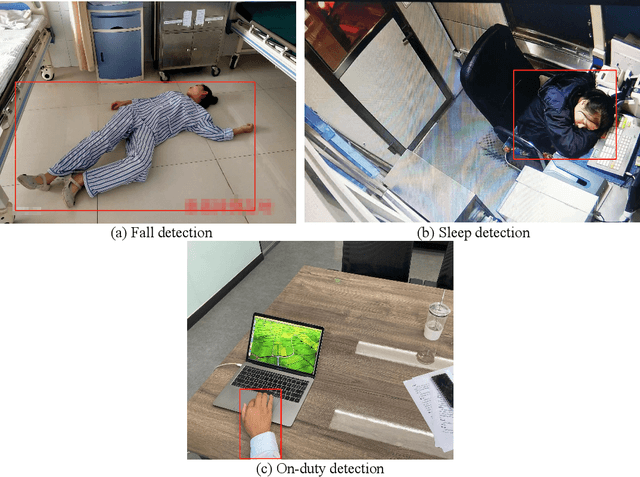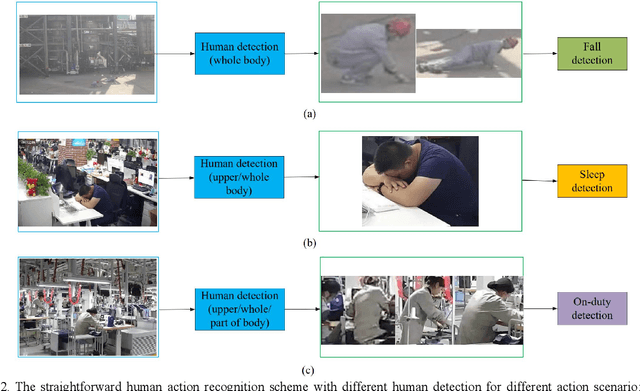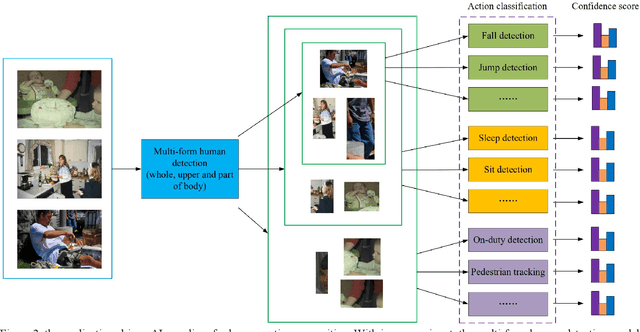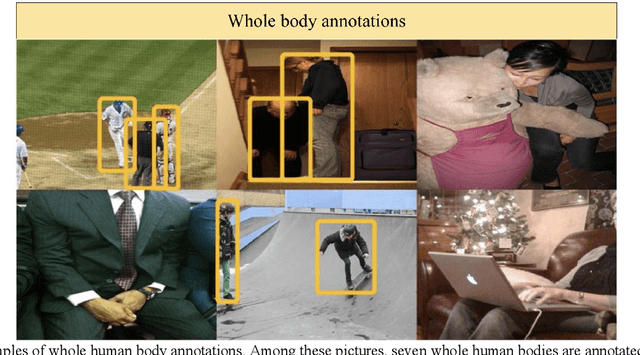Kaikai Zhao
What is the best model? Application-driven Evaluation for Large Language Models
Jun 14, 2024Abstract:General large language models enhanced with supervised fine-tuning and reinforcement learning from human feedback are increasingly popular in academia and industry as they generalize foundation models to various practical tasks in a prompt manner. To assist users in selecting the best model in practical application scenarios, i.e., choosing the model that meets the application requirements while minimizing cost, we introduce A-Eval, an application-driven LLMs evaluation benchmark for general large language models. First, we categorize evaluation tasks into five main categories and 27 sub-categories from a practical application perspective. Next, we construct a dataset comprising 678 question-and-answer pairs through a process of collecting, annotating, and reviewing. Then, we design an objective and effective evaluation method and evaluate a series of LLMs of different scales on A-Eval. Finally, we reveal interesting laws regarding model scale and task difficulty level and propose a feasible method for selecting the best model. Through A-Eval, we provide clear empirical and engineer guidance for selecting the best model, reducing barriers to selecting and using LLMs and promoting their application and development. Our benchmark is publicly available at https://github.com/UnicomAI/DataSet/tree/main/TestData/GeneralAbility.
KS-DETR: Knowledge Sharing in Attention Learning for Detection Transformer
Feb 22, 2023



Abstract:Scaled dot-product attention applies a softmax function on the scaled dot-product of queries and keys to calculate weights and then multiplies the weights and values. In this work, we study how to improve the learning of scaled dot-product attention to improve the accuracy of DETR. Our method is based on the following observations: using ground truth foreground-background mask (GT Fg-Bg Mask) as additional cues in the weights/values learning enables learning much better weights/values; with better weights/values, better values/weights can be learned. We propose a triple-attention module in which the first attention is a plain scaled dot-product attention, the second/third attention generates high-quality weights/values (with the assistance of GT Fg-Bg Mask) and shares the values/weights with the first attention to improve the quality of values/weights. The second and third attentions are removed during inference. We call our method knowledge-sharing DETR (KS-DETR), which is an extension of knowledge distillation (KD) in the way that the improved weights and values of the teachers (the second and third attentions) are directly shared, instead of mimicked, by the student (the first attention) to enable more efficient knowledge transfer from the teachers to the student. Experiments on various DETR-like methods show consistent improvements over the baseline methods on the MS COCO benchmark. Code is available at https://github.com/edocanonymous/KS-DETR.
Application-Driven AI Paradigm for Human Action Recognition
Sep 30, 2022



Abstract:Human action recognition in computer vision has been widely studied in recent years. However, most algorithms consider only certain action specially with even high computational cost. That is not suitable for practical applications with multiple actions to be identified with low computational cost. To meet various application scenarios, this paper presents a unified human action recognition framework composed of two modules, i.e., multi-form human detection and corresponding action classification. Among them, an open-source dataset is constructed to train a multi-form human detection model that distinguishes a human being's whole body, upper body or part body, and the followed action classification model is adopted to recognize such action as falling, sleeping or on-duty, etc. Some experimental results show that the unified framework is effective for various application scenarios. It is expected to be a new application-driven AI paradigm for human action recognition.
A Waste Copper Granules Rating System Based on Machine Vision
Jul 14, 2022



Abstract:In the field of waste copper granules recycling, engineers should be able to identify all different sorts of impurities in waste copper granules and estimate their mass proportion relying on experience before rating. This manual rating method is costly, lacking in objectivity and comprehensiveness. To tackle this problem, we propose a waste copper granules rating system based on machine vision and deep learning. We firstly formulate the rating task into a 2D image recognition and purity regression task. Then we design a two-stage convolutional rating network to compute the mass purity and rating level of waste copper granules. Our rating network includes a segmentation network and a purity regression network, which respectively calculate the semantic segmentation heatmaps and purity results of the waste copper granules. After training the rating network on the augmented datasets, experiments on real waste copper granules demonstrate the effectiveness and superiority of the proposed network. Specifically, our system is superior to the manual method in terms of accuracy, effectiveness, robustness, and objectivity.
ESmodels: An Epistemic Specification Solver
May 14, 2014Abstract:(To appear in Theory and Practice of Logic Programming (TPLP)) ESmodels is designed and implemented as an experiment platform to investigate the semantics, language, related reasoning algorithms, and possible applications of epistemic specifications.We first give the epistemic specification language of ESmodels and its semantics. The language employs only one modal operator K but we prove that it is able to represent luxuriant modal operators by presenting transformation rules. Then, we describe basic algorithms and optimization approaches used in ESmodels. After that, we discuss possible applications of ESmodels in conformant planning and constraint satisfaction. Finally, we conclude with perspectives.
 Add to Chrome
Add to Chrome Add to Firefox
Add to Firefox Add to Edge
Add to Edge